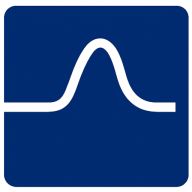
Steady State Scientific Computing
Our Story
Steady State Scientific was launched in April of 2020 to assist the Samen Slim Open Consortium study the dyanmics of SARS-Covid-19 transmission in public spaces
COmpleted Research Projects
SSO Consortium
Samenslim Open is a research consortium led by Prof. Quirine ten Bosch of Wageningen University & Research. Steady State produced an agent based model of SARS-Covid-19 transmission that integrated into general pedestrian models to explore the dynamics of disease transmission in public spaces. SSSC provided the design, implementation, and maitanance of the model in addition to work with Game Tailors to build an online tool allowing resturants to optimally lay out their dining areas to reduce transmission.
This work resulted in the following publication in PLOS Computational Biology.
SSS Consortium
This project studies the contributions of indoor social spaces to overall SARS-CoV-2 transmission - intersecting models with behavioral and epidemiological data for informed decision making. It is a joint project between the University of Wageningen, the University of Amsterdam, and TU-Delft, led by Prof. ten Bosch, Assistant Professor in Infectious Disease Epidemiology at the University of Wageningen. This interdisciplinary study combines activity space models of human movement in cities and towns with a compartmental model of disease transmission. Steady State’s role is implement both the activity space model and the compartmental model in addition to extracting and formatting real world human movement data from Den Hague, Netherlands. The end goal, in addition to answering the research questions in the grant, is to produce a reusable, flexible activity space based transmission model that can be applied to other urban settings and disease systems.
ongoing Research Projects
Refining pandemic strategies for schools (repass)
Schools are hotspots for transmission of newly emerging respiratory pathogens and are among the primary targets for pandemic measures. The decision on school interventions, such as closures, has been contentious due to their threat to children’s learning and an unclear impact on transmission. The REPASS project aims to develop a novel interdisciplinary modeling approach to improve school interventions for pandemic response through a joint evaluation of their epidemiological impact (infections averted in children and the broader community) and their societal impact on children's learning outcomes. We will build a mathematical model to simulate transmission across multiple scales (classroom, school, and school-household network) and respiratory pathogen scenarios. Collaborating with stakeholders, we will co-create a portfolio of school interventions, test them in simulations, and design exercises that policymakers can use to make informed decisions and prepare for future pandemics. REPASS, is led by Dr. Ganna Rozhnova at University Medical Center, Utrecht. Steady State is working as a prime contractor implementing and integrating the variously scaled models.
Bovine Digital DERMATITIS
The primary goal of Steady State is to produce reliable, maintainable, and efficient software for our partners so they can answer their research questions. The secondary goal is to create software that can be easily reused across research domains to reduce project cost. This project, studying the impact of cattle contact the spread of Bovine Digital Dermatitis, is our first reapplication of the agent based, microscopic, disease transmission model built under the SARS-Covid-19 SSS consortium. We are modifying both the model agent definitions to cattle from humans and disease emission patterns to BDD. The WUR model dairy farm has provided the project with three months of detailed cattle movement vectors to calibrate and test the model. Work is ongoing.